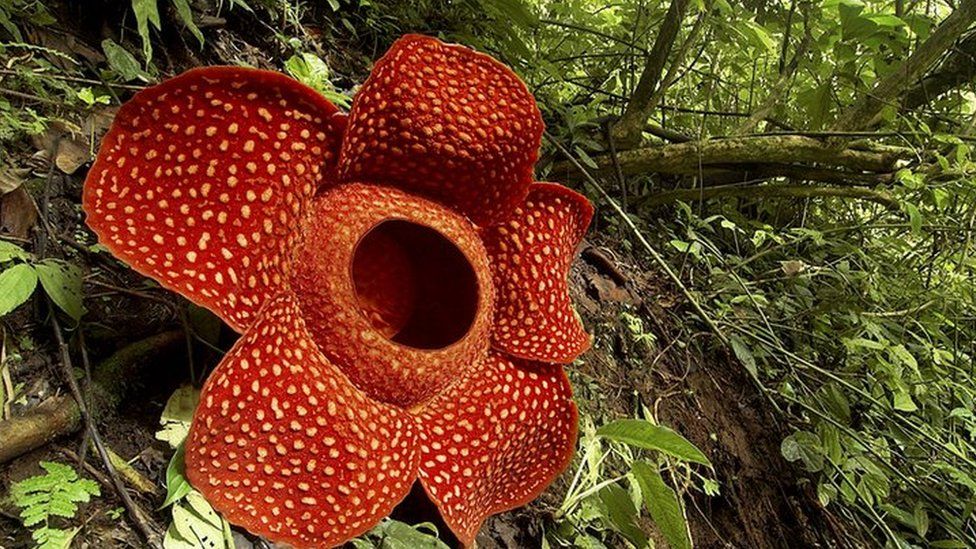World's smelliest plants: Is the Rafflesia about to go extinct?
- Published
- comments

Why is this plant so smelly?
Scientists are concerned that the world's smelliest plant is under threat.
The Rafflesia - which blooms the largest flowers in the world - is found in south-east Asia.
It feeds on jungle vines - which are being destroyed due to deforestation.
Scientists are asking for more to be done to protect the plant's habitat and look after biodiversity in the jungle.
More environmental news from around the world:
What is the world's smelliest plant?
The Rafflesia is not only known as the smelliest flower in the world, it also produces the biggest flower in the world.
It also doesn't have any leaves, stems or roots.
Unlike other plants, it doesn't photosynthesise - which means it unusually does not get its 'food' from sunlight. Instead it absorbs water and nutrients from its host - the vines around it.
The plant spends a lot of time inside the vines, but occasionally blooms a huge, stinky flower.
What other smelly plants are out there?
The Rafflesia isn't the only plant stinking up the natural world. The skunk cabbage is also famous for its stench - that's why it's been named after the skunk.
It is found in swamps and wet woods in America, and gives out a rotten smell which attracts flies and beetles to pollinate it. It's also able to produce heat, which helps the flowers bloom even when the ground is very cold.
The skunk cabbage looks a bit spooky...
There's also the Titan arum - which also has the ability to heat up - and gives out the smell of rotting meat. It's another really big one, and mainly found in Indonesia.
The Titan arum's smell is so strong that you might want to hold your nose around it!
Why is the Rafflesia under threat?
The plant feeds on jungle vines - which are being destroyed by deforestation. One type of Rafflesia - called the Rafflesia magnifica - is currently listed as being critically endangered, which means there aren't many left, and it needs help.
However, scientists are asking for other types of the Rafflesia plant to be considered critically endangered too, so it can get assistance from conservation projects to help it survive.
Despite being very smelly - the plant is vital for biodiversity in the jungle
What can be done about it?
Not much is known about these mysteriously smelly plants, and more research into how they grow and develop could help look after them.
Experts say protecting the plants' habitat in the jungle could help, by ensuring it always has something to feed on.
Looking after the plant will also benefit other plants and species in the area, contributing to biodiversity.
- Published24 January 2023
- Published3 November 2021
